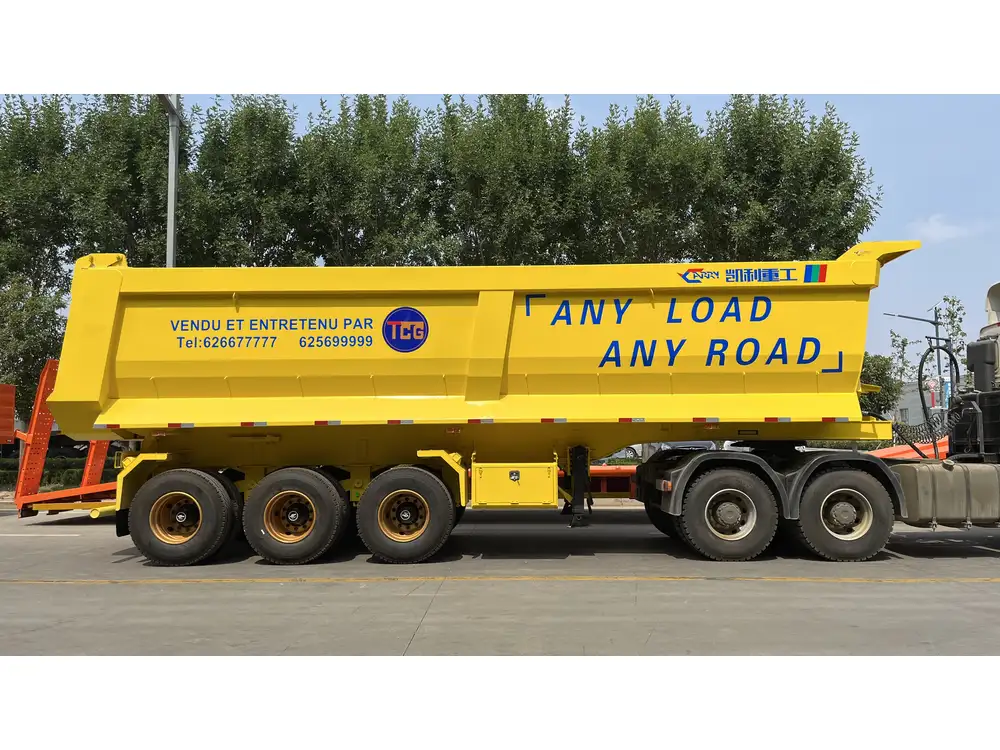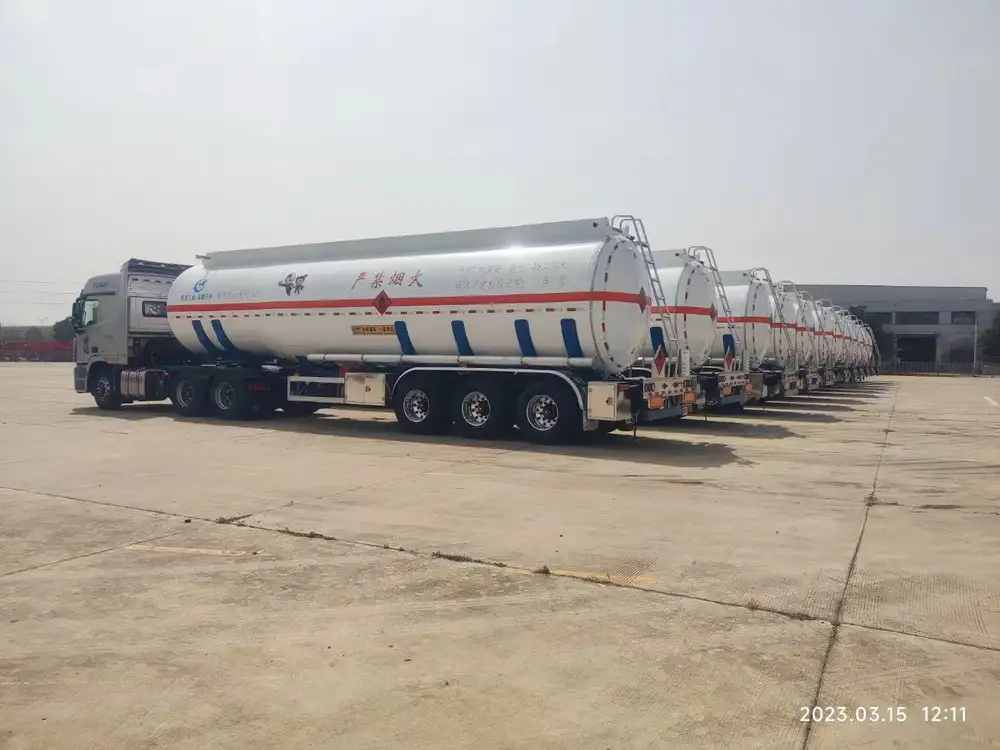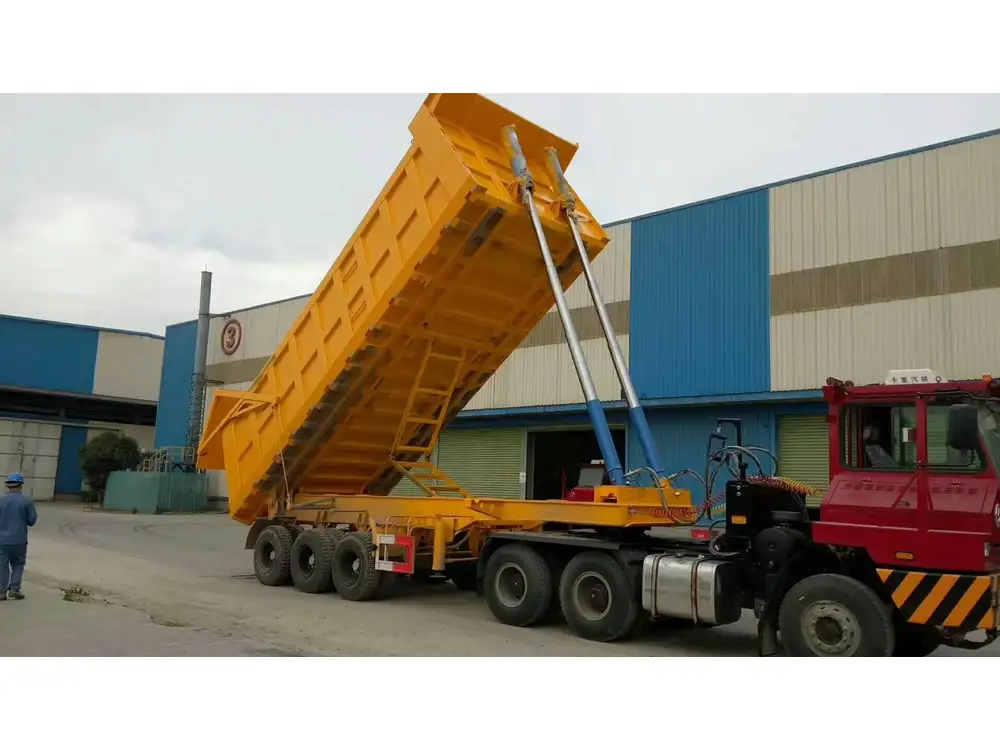What Is a Semi-Trailer?
A semi-trailer, often referred to simply as a semi, is a type of trailer that is designed to be towed by a tractor unit (the truck). Unlike a conventional trailer, a semi-trailer has no front axle; instead, it relies on the tractor for support. The rear part of a semi-trailer is supported by wheels, allowing it to pivot and maneuver easily. This design facilitates heavy haulage and is commonly utilized in the transportation industry.
The Basic Structure of a Semi-Trailer
The semi-trailer consists of several key components that contribute to its functionality and operational effectiveness:
| Component | Description |
|---|---|
| Chassis | The frame that provides structural integrity. |
| Axles | Typically, two or three axles are used to distribute weight. |
| Kingpin | Connects the semi-trailer to the tractor unit. |
| Suspension System | Absorbs road shocks and maintains stability. |
| Body | Varies based on the cargo type (e.g., flatbed, refrigerated, dry van). |
| Wheels & Tires | Allow for movement and load support. |

Types of Semi-Trailers
Semi-trailers come in a variety of types, each tailored for specific applications. Here is an overview of some common types:
Flatbed Semi-Trailer
- Ideal for transporting heavy loads that do not require protection from the elements, such as construction materials and machinery.
Refrigerated Semi-Trailer
- Equipped with a refrigeration unit to transport perishable goods like food and pharmaceuticals.
Dry Van Semi-Trailer
- A fully enclosed trailer that protects cargo from weather conditions, often used for shipping consumer goods.
Tanker Semi-Trailer
- Designed to carry liquids, such as gasoline or chemicals, ensuring the safe transit of hazardous materials.
Lowboy Semi-Trailer
- A specialized trailer with a low deck height, ideal for loading heavy equipment and oversized loads.
Key Benefits of Using Semi-Trailers
Utilizing semi-trailers in logistics and transportation comes with numerous advantages:
- Versatility: Semi-trailers can be adapted for various cargo types, making them suitable for numerous industries.
- Increased Payload Capacity: By utilizing a semi-trailer configuration, drivers can carry more weight than with standard trailers.
- Enhanced Maneuverability: The pivoting design allows for greater flexibility in navigation, especially in tight spaces.
- Cost-Effectiveness: They often provide better fuel efficiency compared to non-articulated vehicles, reducing operational costs.
- Safety Features: Many semi-trailers are equipped with advanced safety features, such as anti-lock braking systems and electronic stability control.
The Importance of Load Distribution and Weight Regulations

Load Distribution
Proper load distribution is crucial for maintaining vehicle stability and safety. Semi-trailers must adhere to specific weight distribution guidelines to prevent dangerous situations on the road.
| Load Distribution Type | Safe Weight Distribution | Notes |
|---|---|---|
| Forward Load | Center of gravity towards the front | Avoids swaying or fishtailing on the highway |
| Backward Load | Center of gravity towards the rear | Can cause front-end lift and instability |
| Even Distribution | Spread across all axles | Ensures balanced handling and tire wear |
Weight Regulations
In the United States, the Federal Highway Administration (FHWA) regulates the maximum weight allowed on public roads to prevent damage. The Gross Vehicle Weight Rating (GVWR) for a semi-trailer and its tractor typically cannot exceed 80,000 pounds.
Common Weight Regulations
- Single Axle: 20,000 pounds
- Tandem Axle: 34,000 pounds
- Tridem Axle: 42,000 pounds
Understanding these regulations is vital for fleet operators, as exceeding weight limits can lead to heavy fines and unsafe driving conditions.

Maintenance of Semi-Trailers for Optimal Performance
Maintaining semi-trailers is essential for ensuring performance, safety, and longevity. Regular inspections and maintenance can help avoid costly breakdowns and enhance safety on the road.
Routine Maintenance Checklist
| Maintenance Task | Frequency | Importance |
|---|---|---|
| Tire Inspection | Monthly | Checks tread depth, pressure, and wear |
| Brake System Check | Every 6 months | Essential for safe stopping power |
| Lubrication of Moving Parts | Quarterly | Reduces friction and prevents premature wear |
| Lights and Electrical | Monthly | Ensures visibility and compliance with laws |
| Suspension Inspection | Annually | Maintains ride quality and load stability |
Importance of Regular Inspections
A comprehensive maintenance routine not only ensures the reliability of the semi-trailer but also significantly lowers the risk of accidents. Signs of wear, such as unusual noises, vibration during use, or uneven tire wear, should be addressed immediately to avoid catastrophic failures on the road.

Selecting the Right Semi-Trailer for Your Needs
Choosing the right semi-trailer can profoundly influence the efficiency of your logistics operations. Here’s a guide to selecting the appropriate semi-trailer:
Key Considerations
Type of Cargo: The nature of the goods being transported will dictate the need for specific variations, such as dry van, refrigerated, or flatbed trailers.
Distance of Travel: For long hauls, aerodynamics and weight are crucial considerations. A trailer designed to be more aerodynamic can improve fuel efficiency and may be better suited for long distances.
Weight Requirements: Assess the maximum payload capacity required and select a semi-trailer that can accommodate this without exceeding weight regulations.
Terrain: If the routes include off-road or rough terrain, a sturdy and rugged design will be necessary.
Budget Constraints: New semi-trailers can be expensive. Consider your budget as well as the long-term benefits of investing in higher-quality trailers.
Ensuring Compliance with Regulations
Navigating the complex landscape of transportation regulations is critical for semi-trailer operators. Compliance ensures not only legal operation but also the safety of the cargo and drivers.

Key Regulations to Consider
Federal Motor Carrier Safety Administration (FMCSA) Regulations: Ensure drivers have the required licensing and that vehicles comply with safety standards.
Hours of Service Regulations: Mandate the maximum drive time and required rest periods for drivers to prevent fatigue.
Hazardous Materials Regulations: Additional certifications may be required if transporting dangerous goods, demanding adherence to strict safety protocols.
The Future of Semi-Trailer Technology
As technology evolves, the semi-trailer industry is witnessing significant advancements aimed at increasing efficiency, safety, and sustainability.
Emerging Technologies
Telematics: Real-time monitoring of trailer conditions (e.g., tire pressure, braking systems) allows for immediate maintenance actions, preventing breakdowns.
Electric Powertrains: The move towards electrification is evident, with electric semi-trailers increasingly being developed to reduce reliance on fossil fuels.
Autonomous Vehicles: Semi-autonomous trucks are becoming a reality, enhancing safety and efficiency while reducing the physical demands placed on drivers.

Sustainability Initiatives
The industry is increasingly focused on reducing its carbon footprint. Innovations in materials, hybrid technology, and regenerative braking systems are some of the ways semi-trailer manufacturers are addressing environmental concerns.
Conclusion: A Reliable Partner in Logistics
Understanding the multifaceted nature of semi-trailers is crucial for anyone involved in the transportation and logistics industry. From their design and operational principles to maintenance and regulatory compliance, these vehicles are integral to the supply chain.
Selecting the right semi-trailer not only enhances operation efficiency but also ensures adherence to regulations, contributing to overall success in cargo transport. As technology and sustainability initiatives evolve, the semi-trailer industry continues to adapt, positioning itself as a reliable partner in modern logistics.
With the right information and a proactive approach, businesses can leverage semi-trailers effectively, ensuring safe, compliant, and cost-effective transportation of goods. This comprehensive understanding, coupled with strategic selection and regular maintenance, lays the foundation for lasting success in the transportation industry.



